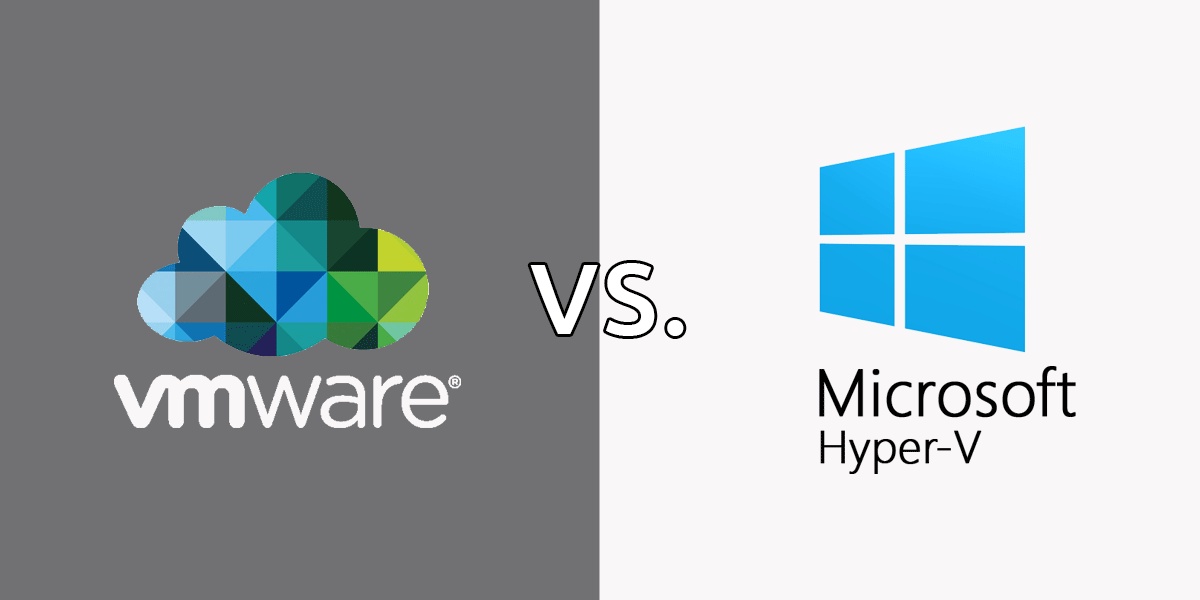In the rapidly evolving landscape of IT infrastructure, the transition from one virtualization platform to another is a significant undertaking. Among the myriad options available for creating and managing virtual environments, Hyper-V by Microsoft and VMware's vSphere are two of the most prominent contenders. This article delves into the journey of transitioning from Hyper-V to VMware, covering the rationale behind such a move, the process involved, Hyper-V to VMware: Smooth Migration Tips, and the expected outcomes.
Understanding the Motive
Before embarking on the migration journey, it's crucial to understand why organizations opt to transition from Hyper-V to VMware. Several factors contribute to this decision, including VMware's comprehensive feature set, its robust ecosystem, higher performance benchmarks, and its reputation for reliability in supporting mission-critical applications. VMware's advanced capabilities in areas such as automation, management, and scalability often tip the scales in its favor for enterprises seeking to optimize their virtual infrastructure.
The Transition Process
The process of migrating from Hyper-V to VMware involves several key steps, each critical to ensuring a smooth and effective transition. Here's a broad overview:
-
Preparation and Planning: This initial phase involves a thorough assessment of the existing Hyper-V environment, including the inventory of virtual machines (VMs), network configurations, storage requirements, and performance metrics. Planning also includes understanding VMware's architecture and how it differs from Hyper-V, to tailor the migration strategy accordingly.
-
Choosing the Right Tools: VMware provides tools such as vCenter Converter for converting and migrating VMs. This tool automates the process of converting the Hyper-V VMs (in VHD format) to VMware-compatible VMs (in VMDK format), simplifying the technical complexity involved in the transition.
-
Testing: Before proceeding with a full-scale migration, conducting a pilot test with a small set of VMs is crucial. This step helps in identifying potential issues in the migration process and allows IT teams to fine-tune their approach.
-
Execution: With a successful pilot test, the next step is the actual migration. This involves using the selected tools to convert and transfer VMs from Hyper-V to VMware, reconfiguring network settings, and ensuring that all VMs are properly integrated into the VMware environment.
-
Post-Migration Optimization: After the migration, it's important to optimize the new environment. This includes tweaking VMware settings for optimal performance, setting up monitoring tools, and ensuring that backup and disaster recovery processes are in place.
Challenges and Solutions
Migrating from Hyper-V to VMware is not without its challenges. These can range from technical issues, such as compatibility problems and performance discrepancies, to organizational hurdles like training staff to manage the new environment effectively. Solutions include thorough testing, leveraging VMware's extensive documentation and support resources, and engaging with a VMware-certified partner for expert guidance.
Expected Outcomes
Organizations that successfully transition from Hyper-V to VMware can expect several benefits. These include improved performance and reliability, enhanced features for managing and automating VMs, and a stronger foundation for future scalability and innovation. The transition also positions enterprises to better support a broad spectrum of applications and workloads, from traditional enterprise applications to modern cloud-native applications.
Conclusion
Transitioning from Hyper-V to VMware is a strategic move for organizations looking to leverage the advanced capabilities and robustness of VMware's virtualization platform. While the migration process requires careful planning, execution, and optimization, the benefits in terms of performance, scalability, and infrastructure management are substantial. With a clear strategy and the right tools, organizations can smoothly transition to a VMware environment, setting the stage for enhanced IT agility and efficiency.


No comments yet